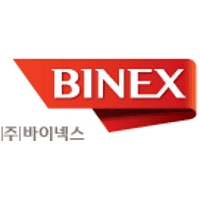预约演示
更新于:2025-05-07
Harbour Biomed Therapeutics Ltd.
子公司|2016|中国香港
子公司|2016|中国香港
更新于:2025-05-07
概览
标签
肿瘤
呼吸系统疾病
免疫系统疾病
单克隆抗体
双特异性T细胞结合器
双特异性抗体
疾病领域得分
一眼洞穿机构专注的疾病领域
暂无数据
技术平台
公司药物应用最多的技术
暂无数据
靶点
公司最常开发的靶点
暂无数据
| 排名前五的药物类型 | 数量 |
|---|---|
| 单克隆抗体 | 20 |
| 双特异性T细胞结合器 | 5 |
| 双特异性抗体 | 4 |
| 重组蛋白 | 2 |
| 生物药 | 2 |
关联
54
项与 Harbour Biomed Therapeutics Ltd. 相关的药物靶点 |
作用机制 FcRn拮抗剂 [+1] |
非在研适应症 |
最高研发阶段申请上市 |
首次获批国家/地区- |
首次获批日期- |
靶点 |
作用机制 TNF-α抑制剂 |
在研机构 |
在研适应症 |
最高研发阶段临床3期 |
首次获批国家/地区- |
首次获批日期- |
靶点 |
作用机制 TSLP抑制剂 |
在研机构 |
原研机构 |
非在研适应症- |
最高研发阶段临床2期 |
首次获批国家/地区- |
首次获批日期- |
25
项与 Harbour Biomed Therapeutics Ltd. 相关的临床试验CTR20221961
一项在中国健康受试者中开展的随机、双盲、安慰剂对照、单剂量递增给药的I期临床研究,评估皮下给药后HBM9378(SKB378)的安全性、耐受性和药代动力学
评估在中国健康受试者中单次皮下注射不同剂量HBM9378(SKB378)的安全性、耐受性和药代动力学特征
开始日期2022-09-23 |
申办/合作机构  四川科伦博泰生物医药股份有限公司 四川科伦博泰生物医药股份有限公司 [+1] |
NCT05790694
A Randomized, Double-blind, Placebo-controlled, Single-ascending-dose Phase I Clinical Study in Healthy Chinese Subjects to Evaluate the Safety, Tolerability and Pharmacokinetics of HBM9378 (SKB378) After Subcutaneous Administration.
The objective is to evaluate the safety, tolerability and pharmacokinetic profile of a single subcutaneous injection of HBM9378 (SKB378) at different doses in healthy Chinese subjects.
开始日期2022-08-26 |
申办/合作机构 |
NCT05332210
A Long-term Open-label Extension Study to Evaluate the Safety of HBM9161 (HL161) Subcutaneous Injection in Patients With Generalized Myasthenia Gravis
The primary study objective is to evaluate medium- and long-term safety of HBM9161 in combination with background treatment for gMG patients through the observation on adverse events and laboratory abnormalities during study period.
开始日期2022-06-30 |
申办/合作机构 |
100 项与 Harbour Biomed Therapeutics Ltd. 相关的临床结果
登录后查看更多信息
0 项与 Harbour Biomed Therapeutics Ltd. 相关的专利(医药)
登录后查看更多信息
3
项与 Harbour Biomed Therapeutics Ltd. 相关的文献(医药)2019-01-01·Emerging Microbes & Infections2区 · 医学
Towards a solution to MERS: protective human monoclonal antibodies targeting different domains and functions of the MERS-coronavirus spike glycoprotein
2区 · 医学
ArticleOA
作者: Bosch, Berend-Jan ; Drabek, Dubravka ; Gutiérrez-Álvarez, Javier ; Widjaja, Ivy ; van Kuppeveld, Frank J. M. ; Fernandez-Delgado, Raul ; Raj, V. Stalin ; Wang, Chunyan ; Grosveld, Frank ; van Dieren, Brenda ; Enjuanes, Luis ; Li, Wentao ; van Haperen, Rien ; Haagmans, Bart L. ; Okba, Nisreen M.A.
2011-09-27·Proceedings of the National Academy of Sciences1区 · 综合性期刊
Heavy chain-only antibodies and tetravalent bispecific antibody neutralizing
Staphylococcus aureus
leukotoxins
1区 · 综合性期刊
Article
作者: de Boer, Ernie ; Grosveld, Frank ; Chen, Tao ; Lebbink, Joyce H. G. ; Prévost, Gilles ; Drabek, Dubravka ; Rademaker, Hendrik Jan ; Janssens, Rick ; Marcellin, Luc ; Laventie, Benoît-Joseph ; Bourcier, Tristan ; van Haperen, Rien ; Subilia, Audrey ; Saleh, Maher
Frontiers in Immunology2区 · 医学
Therapeutic Response and Possible Biomarkers in Acute Attacks of Neuromyelitis Optica Spectrum Disorders: A Prospective Observational Study
2区 · 医学
ArticleOA
作者: Lu, Yaxin ; Qiu, Wei ; Sun, Xiaobo ; Shan, Yilong ; Lu, Zhengqi ; Wang, Yuge ; Lee, Michael ; Wang, Jingqi ; Tan, Sha ; Cui, Chunping ; Wang, Honghao ; He, Shane ; Long, Youming ; Li, Rui ; Chang, Yanyu ; Wang, Zhanhang
2,577
项与 Harbour Biomed Therapeutics Ltd. 相关的新闻(医药)2025-05-02
·医药笔记
▎Armstrong2025年5月1日,礼来发布一季度财报,营业收入127亿美元,同比增长45%,核心产品销售额75亿美元,同比增长119%。礼来2025年580-610亿美元的收入指引不变,强调小分子GLP-1的成功具有重要意义。不过诺和诺德在减重药物市场上积极应对,允许多家远程医疗服务商大幅降价。同时,市场对于特朗普政府可能实施的药品关税影响业绩也存在担忧。礼来在公布亮眼的一季报数据后,股价却大跌12%,目前市值为7500亿美元。美国市场上,礼来GLP-1市场份额已经超过诺和诺德,并保持增长趋势。替尔泊肽降糖版一季度销售额38.42亿美元,同比增长113%。替尔泊肽减重版一季度销售额23.12亿美元,为去年一季度的4倍多,替尔泊肽两者合计61.54亿美元。信达生物信迪利单抗一季度销售额1.375亿美元,合10亿元人民币,同比增长19%。总结礼来核心产品销售额一路高涨,尤其是替尔泊肽在降糖市场快速替代司美格鲁肽,减重市场快速放量,预计今年将达到300亿美元销售额,占总营收的一半左右。Armstrong技术全梳理系列GPRC5D靶点全梳理;CD40靶点全梳理;CD47靶点全梳理;补体靶向药物技术全梳理;补体药物:眼科治疗的重要方向;Claudin 6靶点全梳理;Claudin 18.2靶点全梳理;靶点冷暖,行业自知;中国大分子新药研发格局;被炮轰的“me too”;佐剂百年史;胰岛素百年传奇;CUSBEA:风雨四十载;中国新药研发的焦虑;中国生物医药企业的研发竞争;中国双抗竞争格局;中国ADC竞争格局;中国双抗技术全梳理;中国ADC技术全梳理;Ambrx技术全梳理;Vir Biotech技术全梳理;Immune-Onc技术全梳理;亘喜生物技术全梳理;康哲药业技术全梳理;科济药业技术全梳理;恺佧生物技术全梳理;同宜医药技术全梳理;百奥赛图技术全梳理;腾盛博药技术全梳理;创胜集团技术全梳理;永泰生物技术全梳理;中国抗体技术全梳理;德琪医药技术全梳理;德琪医药技术全梳理2.0;和铂医药技术全梳理;荣昌生物技术全梳理;再鼎医药技术全梳理;药明生物技术全梳理;恒瑞医药技术全梳理;豪森药业技术全梳理;正大天晴技术全梳理;吉凯基因技术全梳理;基石药业技术全梳理;百济神州技术全梳理;百济神州技术全梳理第2版;信达生物技术全梳理;信达生物技术全梳理第2版;中山康方技术全梳理;复宏汉霖技术全梳理;先声药业技术全梳理;君实生物技术全梳理;嘉和生物技术全梳理;志道生物技术全梳理;道尔生物技术全梳理;尚健生物技术全梳理;康宁杰瑞技术全梳理;科望医药技术全梳理;岸迈生物技术全梳理;礼进生物技术全梳理;康桥资本技术全梳理;余国良的抗体药布局;荃信生物技术全梳理;安源医药技术全梳理;三生国健技术全梳理;仁会生物技术全梳理;乐普生物技术全梳理;同润生物技术全梳理;宜明昂科技术全梳理;派格生物技术全梳理;迈威生物技术全梳理;Momenta技术全梳理;NGM技术全梳理;普米斯生物技术全梳理;普米斯生物技术全梳理2.0;三叶草生物技术全梳理;贝达药业抗体药全梳理;泽璟制药抗体药全梳理;恒瑞医药抗体药全梳理;齐鲁制药抗体药全梳理;石药集团抗体药全梳理;豪森药业抗体药全梳理;华海药业抗体药全梳理;科伦药业抗体药全梳理;百奥泰技术全梳理;凡恩世技术全梳理。
财报抗体药物偶联物医药出海
2025-05-01
·医药笔记
▎Armstrong2025年5月1日,Madrigal Pharmaceuticals发布一季度财报,MASH新药Rezdiffra销售额1.373亿美元。Rezdiffra从去年上市以来,季度销售额一路高涨,上市满一年实现3.174亿美元销售额。使用Rezdiffra的患者人数不断攀升,2025年一季度超过17000例,相比于31.5万例适用人群仅有5%的渗透率,意味着仍有很大的上涨空间。Rezdiffra对于处方医生的渗透率一路高升,体现了临床上巨大的未满足临床需求。Rezdiffra目前获批的是F2-F3阶段的MASH,对于F4阶段的临床试验正在进行中。目前的数据显示,Rezdiffra对于F4阶段的MASH同样有治疗潜力。总结昨天,司美格鲁肽治疗MASH的三期临床数据发表在新英格兰医学期刊上。FGF21在F4阶段也获得突破性的疗效数据,THR-β激动剂、GLP-1受体激动剂、FGF21的临床进展,未来将为广大MASH患者带来更多治疗选择。Armstrong技术全梳理系列GPRC5D靶点全梳理;CD40靶点全梳理;CD47靶点全梳理;补体靶向药物技术全梳理;补体药物:眼科治疗的重要方向;Claudin 6靶点全梳理;Claudin 18.2靶点全梳理;靶点冷暖,行业自知;中国大分子新药研发格局;被炮轰的“me too”;佐剂百年史;胰岛素百年传奇;CUSBEA:风雨四十载;中国新药研发的焦虑;中国生物医药企业的研发竞争;中国双抗竞争格局;中国ADC竞争格局;中国双抗技术全梳理;中国ADC技术全梳理;Ambrx技术全梳理;Vir Biotech技术全梳理;Immune-Onc技术全梳理;亘喜生物技术全梳理;康哲药业技术全梳理;科济药业技术全梳理;恺佧生物技术全梳理;同宜医药技术全梳理;百奥赛图技术全梳理;腾盛博药技术全梳理;创胜集团技术全梳理;永泰生物技术全梳理;中国抗体技术全梳理;德琪医药技术全梳理;德琪医药技术全梳理2.0;和铂医药技术全梳理;荣昌生物技术全梳理;再鼎医药技术全梳理;药明生物技术全梳理;恒瑞医药技术全梳理;豪森药业技术全梳理;正大天晴技术全梳理;吉凯基因技术全梳理;基石药业技术全梳理;百济神州技术全梳理;百济神州技术全梳理第2版;信达生物技术全梳理;信达生物技术全梳理第2版;中山康方技术全梳理;复宏汉霖技术全梳理;先声药业技术全梳理;君实生物技术全梳理;嘉和生物技术全梳理;志道生物技术全梳理;道尔生物技术全梳理;尚健生物技术全梳理;康宁杰瑞技术全梳理;科望医药技术全梳理;岸迈生物技术全梳理;礼进生物技术全梳理;康桥资本技术全梳理;余国良的抗体药布局;荃信生物技术全梳理;安源医药技术全梳理;三生国健技术全梳理;仁会生物技术全梳理;乐普生物技术全梳理;同润生物技术全梳理;宜明昂科技术全梳理;派格生物技术全梳理;迈威生物技术全梳理;Momenta技术全梳理;NGM技术全梳理;普米斯生物技术全梳理;普米斯生物技术全梳理2.0;三叶草生物技术全梳理;贝达药业抗体药全梳理;泽璟制药抗体药全梳理;恒瑞医药抗体药全梳理;齐鲁制药抗体药全梳理;石药集团抗体药全梳理;豪森药业抗体药全梳理;华海药业抗体药全梳理;科伦药业抗体药全梳理;百奥泰技术全梳理;凡恩世技术全梳理。
财报临床3期抗体药物偶联物
2025-04-30
4月28日,国家药品监督管理局(NMPA)药品审评中心(CDE)正式受理BioBAY园内上市企业百济神州在研BCL2抑制剂索托克拉片(英文通用名:sonrotoclax)的新药上市申请(NDA),并将其已纳入优先审评程序,拟用于治疗既往接受过治疗的慢性淋巴细胞白血病(CLL)/小淋巴细胞淋巴瘤(SLL)成人患者。索托克拉是百济神州开发的一款新一代BCL2抑制剂,旨在阻断可帮助肿瘤细胞存活的BCL2蛋白。BCL2蛋白异常高表达在CLL/SLL等多种血液恶性肿瘤中广泛存在,其通过阻断细胞凋亡程序,为肿瘤细胞营造了持续存活与增殖的有利环境。BCL2抑制剂能特异性地结合并抑制BCL2蛋白,有效恢复肿瘤细胞的凋亡通路,诱导癌细胞死亡。在2024年欧洲血液学协会(EHA)年会上,百济神州展示了sonrotoclax的两项1期研究数据,包括:· sonrotoclax联合泽布替尼用于R/R CLL/SLL患者的1期研究,结果显示出深度和持久的缓解。具体而言,在所有剂量水平的32例可评估反应的患者中,ORR为97% (31/32;1例患者出现SD),完全缓解(CR)率为50% 。达到CR的中位时间为9.8个月。在4例既往接受BTKi治疗的可评估疗效的患者中,3例达到PR (n=2)或CR (n=1)。所有接受sonrotoclax+泽布替尼治疗的患者(100%)在第48周达到了uMRD4。· sonrotoclax联合泽布替尼用于治疗R/R MCL患者的1a/1b期、开放性、剂量递增和扩展研究,研究显示该联合用药方案总体耐受性良好,并展现出具有前景的有效性(包括较高的深度和持久缓解率)。在27例反应可评估的患者中,ORR为85%,其中包括18例CR(67%)。对于剂量扩大队列中可评估反应的患者,320mg队列的CR率和ORR分别为91%和91%,160mg队列的CR率和ORR分别为44%和88%。达到CR的中位时间为6.4个月。在2例既往有BTK抑制剂进展的可评估疗效的患者中,观察到1例CR和1例PD。百济神州高级副总裁、全球研发负责人汪来博士表示:“CLL/SLL是成人常见的血液系统恶性肿瘤,改善患者的长期生存和生活质量至关重要。很高兴看到百济神州在新一代BCL2抑制剂领域取得突破。我们将继续致力于推动创新药物的研发与落地,以期为中国患者带来更多创新治疗选择。”▌文章来源:百济神州、医药观澜责编:赵家帅审核:任旭推荐阅读上市企业丨映恩生物:与阿斯利康达成合作,共同探索HER3 ADC DB-1310和奥希替尼二线联合治疗EGFRm NSCLC潜力上市企业丨贝康医疗:便携式精子分析仪获得注册证上市企业丨连续两年盈利!一图读懂和铂医药2024年度业绩亮点
优先审批申请上市临床1期临床结果
100 项与 Harbour Biomed Therapeutics Ltd. 相关的药物交易
登录后查看更多信息
100 项与 Harbour Biomed Therapeutics Ltd. 相关的转化医学
登录后查看更多信息
组织架构
使用我们的机构树数据加速您的研究。
登录
或

管线布局
2025年12月29日管线快照
管线布局中药物为当前组织机构及其子机构作为药物机构进行统计,早期临床1期并入临床1期,临床1/2期并入临床2期,临床2/3期并入临床3期
药物发现
3
27
临床前
临床申请批准
1
6
临床1期
临床2期
1
1
临床3期
申请上市
1
14
其他
登录后查看更多信息
药物交易
使用我们的药物交易数据加速您的研究。
登录
或

转化医学
使用我们的转化医学数据加速您的研究。
登录
或

营收
使用 Synapse 探索超过 36 万个组织的财务状况。
登录
或

科研基金(NIH)
访问超过 200 万项资助和基金信息,以提升您的研究之旅。
登录
或

投资
深入了解从初创企业到成熟企业的最新公司投资动态。
登录
或

融资
发掘融资趋势以验证和推进您的投资机会。
登录
或

生物医药百科问答
全新生物医药AI Agent 覆盖科研全链路,让突破性发现快人一步
立即开始免费试用!
智慧芽新药情报库是智慧芽专为生命科学人士构建的基于AI的创新药情报平台,助您全方位提升您的研发与决策效率。
立即开始数据试用!
智慧芽新药库数据也通过智慧芽数据服务平台,以API或者数据包形式对外开放,助您更加充分利用智慧芽新药情报信息。
生物序列数据库
生物药研发创新
免费使用
化学结构数据库
小分子化药研发创新
免费使用



